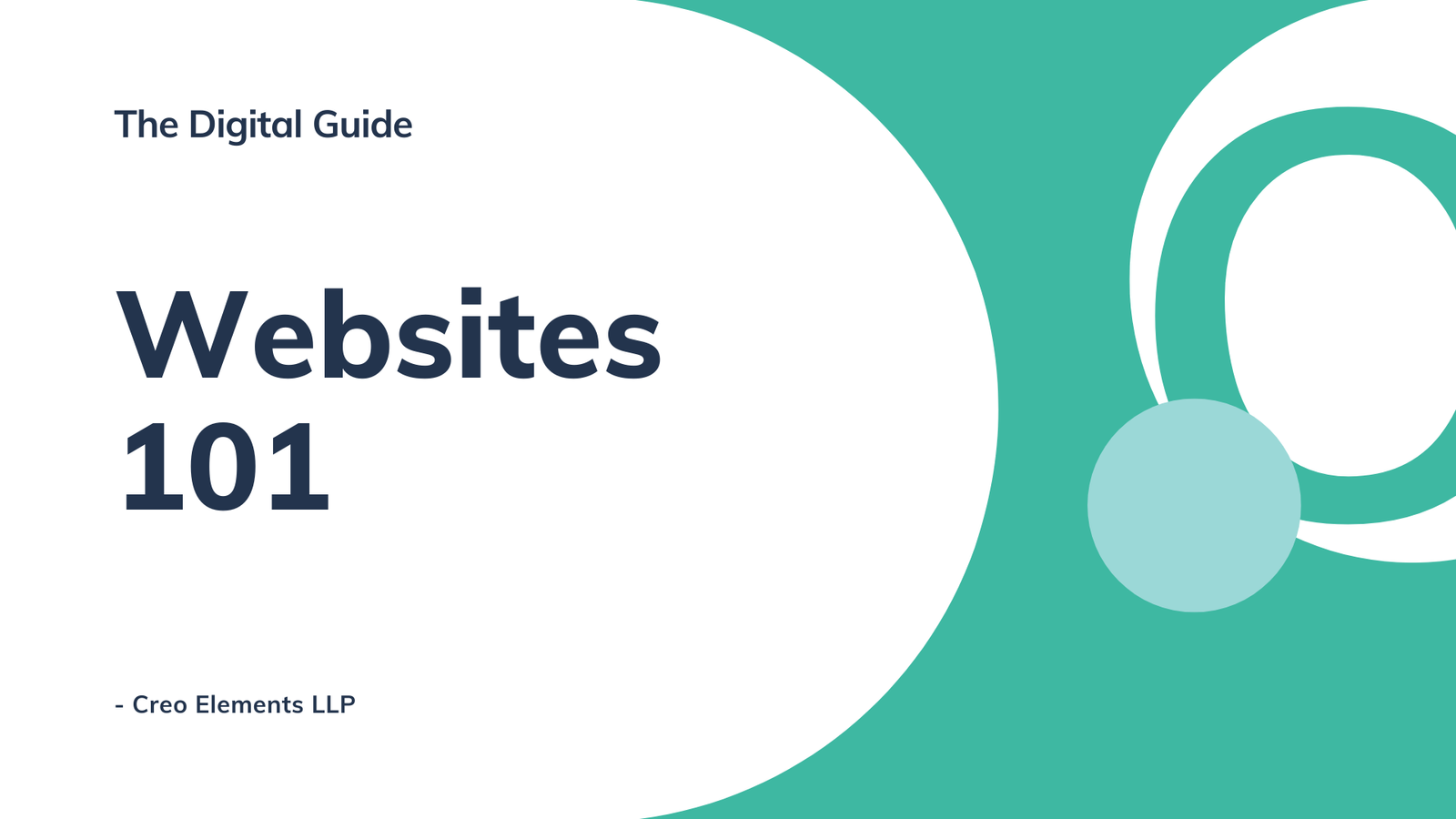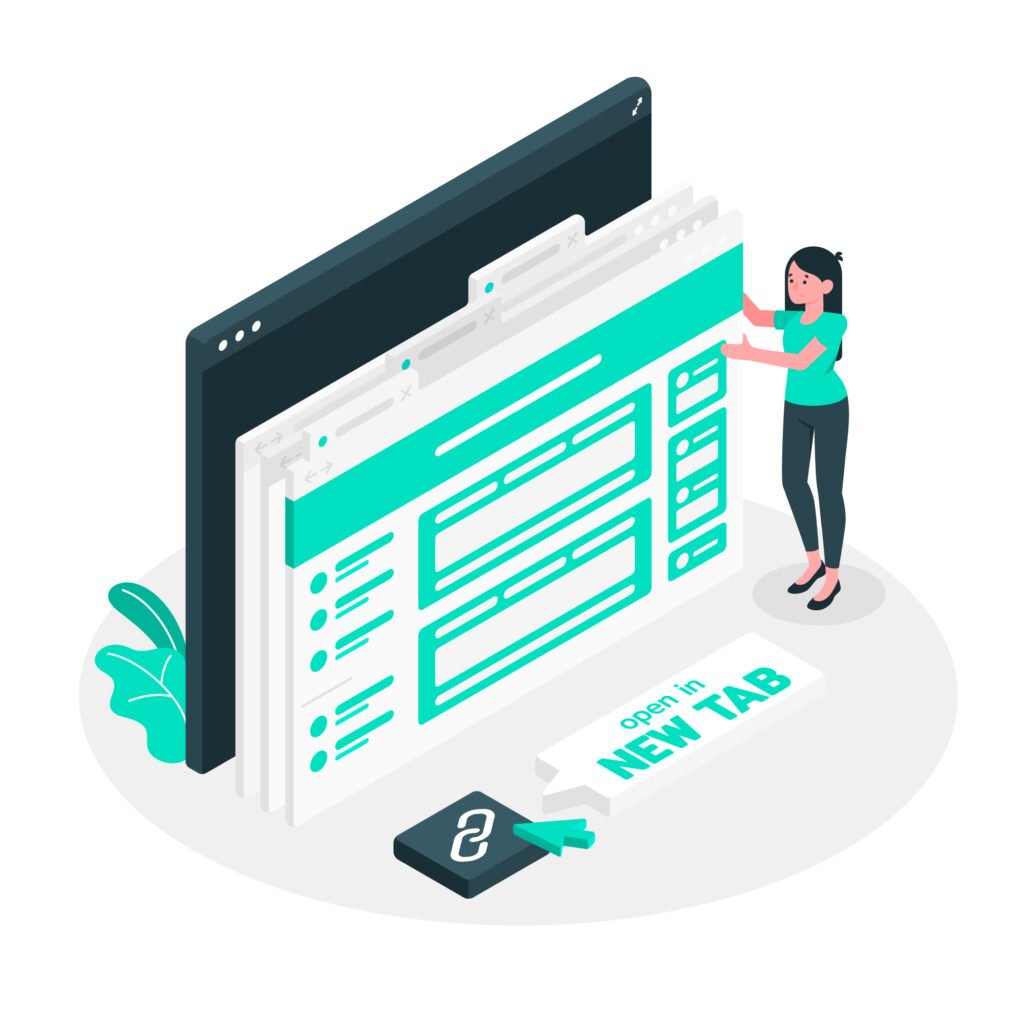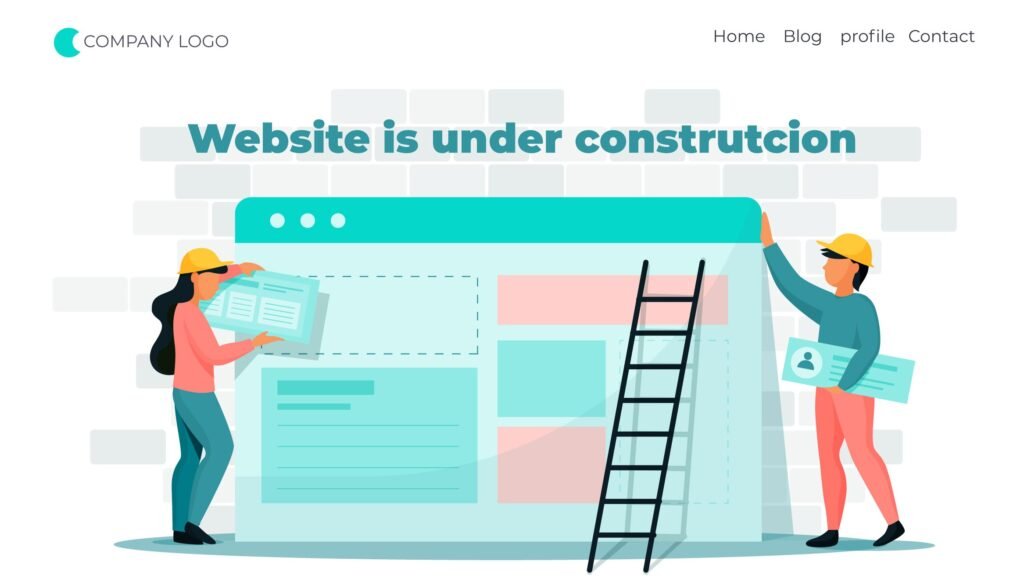Websites 101: Plan, Build, & Launch Your Dream Website

Introduction: What Really is a Website?
This isn’t a blog about coding or web development. It’s for business owners and entrepreneurs who want to understand how a website fits into their sales funnel, strengthens their brand, and directly impacts revenue—without getting lost in the technical details.
When you hear the word “website”, you might think of a collection of web pages on the internet. While that’s technically true, a website is much more than that—it’s a conversion engine, a brand trust accelerator, and a customer acquisition powerhouse. Whether you’re looking to generate leads, establish credibility, or create a seamless buying experience, your website is your digital storefront, marketing asset, and sales enabler all in one. Your website is the backbone of your sales funnel, guiding potential customers from awareness to conversion and retention by establishing credibility, providing key information, and driving action.
Think about it: A potential customer hears about your business and looks you up online. If they don’t find a website, they might hesitate to trust your brand or—worse—turn to a competitor. On the other hand, a well-planned, strategically built website positions even the smallest business as authoritative, credible, and ready for business.
This guide will walk you through the essentials of planning, building, and maintaining a website that drives results—without requiring you to write a single line of code. Let’s get started!

Signs You Need a Website
Some businesses hesitate when it comes to getting a website, but the truth is, if you’re online, your customers should find you online too. Here’s how to tell if you need a website (hint: you probably do).
- You Rely on Word-of-Mouth Alone
Word-of-mouth marketing is fantastic, but it has limits. A website allows your business to grow beyond your immediate network and reach a global audience.
- Your Social Media Feeds Disappear into the Void
Social media platforms are valuable, but their algorithms dictate who sees your content. A website gives you total control over your messaging, branding, and customer interactions.
- Your Business Lacks Credibility
Consumers expect legitimate businesses to have a website. Without one, you risk looking outdated or unreliable. A professional site instantly elevates your brand’s trustworthiness.
- You’re Missing Out on Sales & Leads
A website isn’t just a digital business card—it’s a conversion machine. With the right design and functionality, your site can generate leads, close sales, and build customer relationships without manual effort.
- You Want to Future-Proof Your Business
Markets shift, algorithms change, and platforms disappear. A website is an asset that you own and control, ensuring your business isn’t at the mercy of third-party platforms.
Exploring Different Types of Websites
Depending on your goals, different website structures serve distinct purposes. Here’s a look at some of the most common types:

1. E-commerce Websites
Designed specifically for selling products or services online, e-commerce websites enable businesses to reach customers globally. These sites typically include features like product catalogs, shopping carts, secure payment gateways, customer reviews, and order tracking. Popular platforms include Shopify, WooCommerce, and Magento.
2. Blogs
Content-driven and regularly updated, blogs are ideal for individuals and businesses looking to share insights, news, or personal experiences. They can be standalone sites or part of larger platforms, helping with SEO, audience engagement, and thought leadership.
3. Portfolio Websites
A must-have for creatives such as photographers, designers, artists, writers, and developers, portfolio websites showcase past work in an organized and visually appealing way. These sites help professionals attract clients, employers, or collaborators.
4. Corporate Websites
Every business, from startups to multinational corporations, benefits from a corporate website. These websites provide essential information about the company, including services, leadership, client testimonials, and corporate values. Many also include blogs, investor relations, and career pages.
5. Non-Profit Websites
Built to spread awareness, encourage donations, and foster community engagement, non-profit websites serve as an essential tool for charities, advocacy groups, and community organizations. They often include fundraising features, volunteer sign-up forms, and impact stories.
6. Landing Pages
Unlike multi-page websites, landing pages focus on a single marketing goal, such as lead generation, event registration, or product promotion. They are designed to capture visitor attention quickly, often with compelling headlines, clear calls to action, and minimal distractions.
7. Web Applications
Unlike static websites, web applications are interactive platforms that offer services ranging from project management to online education and software-as-a-service (SaaS) solutions. These sites often require user accounts and provide dynamic content tailored to the user’s needs.
Each type of website plays a crucial role in the digital world, catering to different needs and audiences. Whether you’re an entrepreneur, a creative professional, or a corporate entity, choosing the right website structure ensures a stronger online presence and better user engagement.
Process of Building a Website

Whether you’re launching a new website or refining an existing one, a clear process ensures your site not only looks good but actively supports your business goals.
1. Define the Purpose & Goals
Before diving in, take a step back and clarify what your website needs to achieve.
- Is it meant to generate leads, sell products, or establish credibility?
- Who is your target audience, and what do they need from your site?
- What actions should visitors take—contacting you, signing up, making a purchase?
Having these answers from the start sets a strong foundation for every decision that follows.
2. Secure Your Domain
Your domain name is your digital address, so it should be simple, memorable, and reflective of your brand. Choose a domain that aligns with your business name, and if possible, secure variations to protect your online identity.
When selecting a domain:
- Keep it Short & Easy to Spell – Avoid complex words or long phrases.
- Use the Right Extension – .com is the most common, but industry-specific options like .tech, .store, or country-specific extensions can also work.
- Avoid Trademark Issues – Check for existing trademarks to prevent legal conflicts.
- Consider Future Growth – If your business expands, will the domain still be relevant?
Once you’ve found the perfect domain, register it as soon as possible—good names get taken fast! Also, set up domain privacy protection to keep your personal details secure.
3. Clarify Your Branding
Your website should immediately convey your brand’s personality and professionalism. Define key elements such as:
- Logo & Color Palette – Ensure consistency across all digital touchpoints.
- Tone & Messaging – Speak in a way that resonates with your audience.
- Visual Identity – Use high-quality images and a design style that reflects your brand.
A cohesive brand builds trust and makes your business more recognizable online.
4. Choose the Right Platform & Build Your Website
With a solid plan in place, it’s time to bring your website to life. The platform you choose depends on factors like your budget, technical expertise, customization needs, and long-term goals.
- Website Builders (WordPress, Woocommerce, Shopify, Wix) – These are great for beginners and those who need a website up and running quickly. They offer drag-and-drop functionality, pre-designed templates, and built-in features that make it easy to create a professional-looking site without coding. However, they can be limiting in terms of customization and scalability.
- Custom Coded (React, Next.js, Laravel) – If you need full control over your website’s design, performance, and functionality, custom development is the way to go. This approach is ideal for businesses that require unique features, advanced scalability, or seamless integration with other tools. While it requires more technical expertise and a higher investment, it provides the flexibility to build exactly what you need.
Choosing the right platform is crucial, as it affects your site’s performance, user experience, and ability to grow in the future. Consider your immediate needs as well as your long-term vision before making a decision.
5. Test, Launch & Continuously Improve
Going live isn’t the final step—it’s just the beginning. A well-performing website evolves over time.
- Test on different devices and browsers to fix any issues.
- Optimize for speed and usability to keep visitors engaged.
- Use analytics to track performance and refine the experience.
Ultimate Website Checklist

A high-performing website should be functional, user-friendly, and conversion-focused. Use this checklist to ensure every key element is covered:
1. Design & User Experience (UX)
- Mobile Responsiveness – The website should adapt seamlessly to all screen sizes, from 4-inch phones to 32-inch monitors, ensuring a smooth experience whether on a smartphone or a widescreen display.
- 3-Click Rule – Users should reach any key page within 3 clicks or fewer, similar to how an efficient store layout helps customers find what they need quickly.
- Fast Loading Speed – A slow website is like a long checkout line—frustrating and likely to drive users away. Optimize images, enable caching, and use a CDN to keep load times under 3 seconds.
- Consistent Branding – Just like a well-designed product packaging strengthens a brand, fonts, colors, and design should remain consistent across all pages.
- Essential Accessibility Features – A website should be as easy to navigate as a well-marked road, with readable fonts, alt text for images, proper contrast ratios, and keyboard navigation support.
2. Content & Engagement
- High-Quality Content – Engaging content is like a great conversation—it should be informative, clear, and add value to the user’s experience.
- Clear CTAs – Think of CTAs as signposts on a road trip; they should clearly indicate the next step (e.g., “Get Started,” “Contact Us”) without confusion.
- Easy-to-Find Contact Information – Just like a storefront with a visible “Open” sign, phone numbers, emails, and contact forms should be easily accessible.
- A Blog or Resource Center – Websites with active blogs get 10x more traffic than those without, much like a well-stocked library attracts more visitors.
3. SEO & Performance
- On-Page SEO Essentials – Good SEO is like proper product labeling; meta tags, title tags, keywords, and alt texts help search engines and users understand your content better.
- Internal Linking – Think of internal links as hallways in a building—they should guide users smoothly from one important section to another while helping search engines navigate your site.
- Schema Markup – Structured data is like adding captions to images—it gives search engines extra context, improving visibility in search results.
- Performance Tracking – Using Google Analytics & Search Console is like having a dashboard in a car—it helps monitor performance and detect issues before they become major problems.
- Reliable Hosting & Domain – A reputable hosting provider ensures 99.9% uptime, just as a strong foundation keeps a house stable.
4. Security & Compliance
- SSL Certificate – Encrypting data with an SSL is like sealing a letter in an envelope—it keeps information secure and private.
- Strong Security Measures – Firewalls and security plugins act like locks on doors, preventing unauthorized access and threats.
- Data Privacy Compliance – Following GDPR and privacy laws is like having clear terms on a rental agreement—it protects both the user and the business.
Your Website is Live – Now What?


Congratulations! Your website is officially live, but launching it is just the beginning. A successful website requires ongoing effort to attract visitors, engage users, and drive results. Here’s what you need to focus on next.
Keep Everything Running Smoothly
A well-maintained website builds trust and keeps visitors engaged. Regularly checking for broken links, outdated information, and formatting issues ensures a seamless user experience. Forms, buttons, and navigation should work flawlessly across all devices.
Performance matters too—a slow or buggy website can drive potential customers away. Keeping up with security updates, performance optimizations, and mobile responsiveness ensures your site remains fast, functional, and user-friendly.
Update the Tech Behind Your Website
The digital landscape evolves constantly, and so should your website’s technology. Running outdated software, plugins, or frameworks can lead to security vulnerabilities, performance issues, and compatibility problems. Regular updates keep your site secure, improve loading speeds, and ensure it works smoothly across modern devices and browsers.
Staying current with industry trends—like adopting new SEO practices, enhancing accessibility, or integrating faster and more efficient tools—helps maintain a competitive edge.
Stay Relevant with Fresh Content
A website that never changes can quickly lose its appeal. Updating content regularly not only keeps visitors engaged but also boosts search engine rankings.
Consider adding a blog with industry insights, customer success stories, or helpful guides. If you offer products or services, ensure descriptions, images, and pricing stay up to date. Fresh, relevant content signals to search engines that your site is active, increasing your chances of ranking higher.
Make Sure People Find You
A great website is only effective if people visit it. Driving traffic requires an ongoing promotional strategy:
- SEO (Search Engine Optimization): Optimize your pages with relevant keywords, meta descriptions, and backlinks.
- Social Media Marketing: Share valuable content across platforms to reach a wider audience.
- Email Marketing: Keep your audience engaged with updates, offers, or newsletters.
- Local & Online Directories: Ensure your business is listed in directories and on Google My Business for better visibility.
Consistency is key—regular marketing efforts help maintain a steady flow of visitors.
Monitor & Improve Performance
A website should evolve based on real data, not guesswork. Tools like Google Analytics provide insights into visitor behavior, traffic sources, and engagement metrics.
Analyzing conversion rates helps identify what’s working and where improvements are needed. A/B testing different headlines, layouts, or call-to-action buttons can significantly impact user engagement.
Your Website is an Ongoing Asset
Think of your website as a growing part of your business rather than a one-time project. Keeping it updated, optimized, and performing well ensures it remains a valuable tool that supports your goals long term.
Your website is live—now it’s time to make it thrive!
Conclusion: Your Journey to Online Success

Your website is your digital identity and one of your most powerful business tools. Whether you’re launching a simple blog or a feature-rich e-commerce platform, strategic planning, continuous maintenance, and creative enhancements will ensure long-term success.
Need help creating or improving your website? Explore more insights and expert guidance with Creo Elements LLP. 🚀